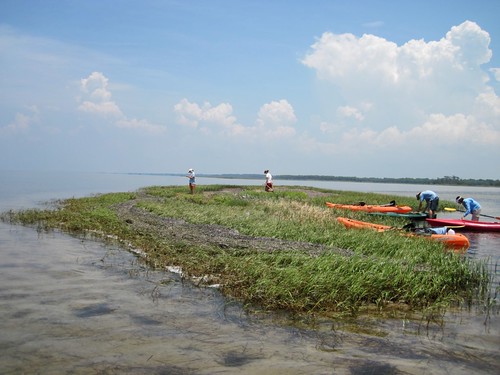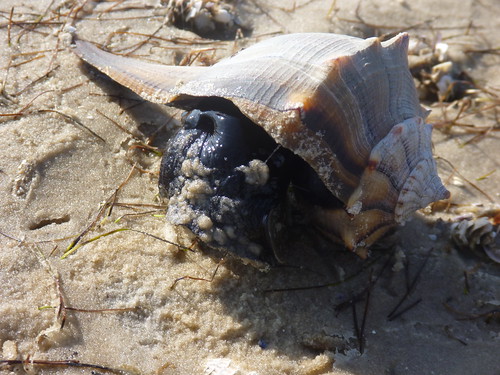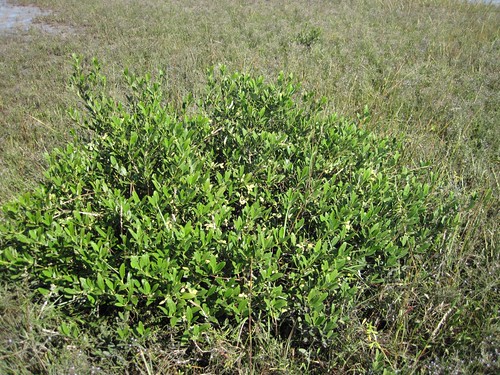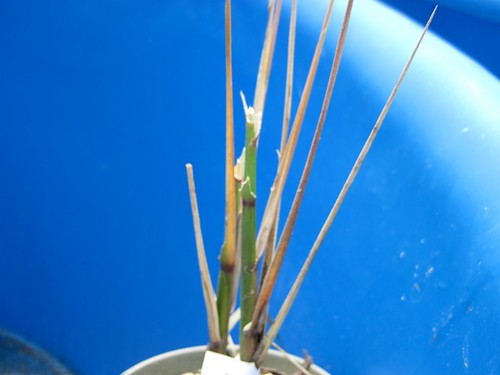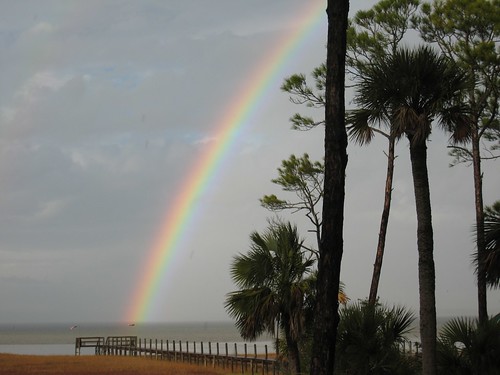Dr. Randall Hughes FSU Coastal & Marine Lab

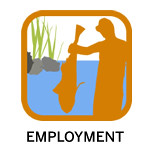 In keeping with all of the other end-of-year top 10 lists, I’ll wrap up 2010 with my own observations and highlights from In the Grass –
In keeping with all of the other end-of-year top 10 lists, I’ll wrap up 2010 with my own observations and highlights from In the Grass –
10. No tarballs – yet??
The over-riding event of the 2010 research season was undoubtedly the Deepwater Horizon oil spill. (In fact, that was the impetus for the start of this blog!) Early in the summer, I thought our marsh field sites in St. Joseph Bay were doomed to be covered in oil. I am very relieved to say that is not the case – there are no visible signs of oil at our sites. It’s too soon to say we’re in the clear, because there is still a lot of oil that is unaccounted for, and there could certainly be “invisible” traces only detectable by laboratory analyses. However, we’re in much better shape than I would have predicted back when this all began, and that’s as good a way as any to start a new year!
9. It takes a lot of people to conduct scientific research.
I had a lot of help over the course of the last year – Team Hughes consisted of (in no particular order) Robyn Zerebecki, Ryan Corley, Emily Field, Althea Moore, Liz Hibner, Kristin Berger, Michele Sosa, Prathyusha Pamidi, and AJ Gelin, and we often enlisted members of Team Kimbro as well.
But even that list does not really represent all of the many people who help to get the work done. There are friends and family (thanks, Mom!) that get roped into helping when no one else is available. In addition, there’s an entire staff here at the FSU Coastal and Marine Lab who see to it that we have all the necessary paperwork complete, decks and tables for our experiments at the lab, seawater flowing to our tanks, irrigation systems in the greenhouse, boats and vehicles to get to our sites, and any number of other odd requests that we come up with. They don’t get nearly enough recognition for the critical role that they play!
8. It’s not as scary as I thought to have a camera documenting my every move in the field.
Field work is neither glamorous nor graceful, so I was a bit worried when we started this blog about having goof-ups documented on video. Thanks to the great work of Rob and his team, it’s actually been quite fun! I hardly even notice their presence when we’re in the field, and I love having so many good photos of critters and field sites, since I’m notoriously bad about taking pictures. Most importantly from my perspective, Rob has a great eye for what is important to include (the science, and the people and process behind the science) and what is not (my team and me clumsily getting out of our kayaks, which never fails to look silly!).
7. Marine plants and invertebrates are really cool.
Ok, this observation has nothing in particular to do with 2010, but I have to put in a plug for the amazing critters that don’t immediately come to mind when you think of charismatic marine animals. I’m talking snails, crown conchs, fiddler crabs, sea hares – all the little guys – and the habitats they live in – salt marshes, seagrass beds, and oyster reefs. Even nondescript sand bars are amazing. I was out last week with Cristina, a visiting researcher in David’s lab, on a sand bar near FSUCML. We found all sorts of large predatory snails (horse conchs, tulip snails, lightning whelks) as well as tons of sand dollars, clams, and worms. Just walking around, looking at, and counting these critters made for one of my most fun field excursions in recent memory. (It didn’t hurt that it wasn’t freezing cold.)
Learn more about the predatory snails Randall saw at Baymouth Bar.
6. Sometimes things are hiding in plain sight.
When Dr. Ed Proffitt visited in the fall, I told him that I thought I may be able to find a spot in St. Joe Bay with 1 or 2 black mangroves for us to look at. Turns out, it’s harder to find a spot that does NOT have 1 or 2 black mangroves! I’m really interested to follow their abundance over the next few years to learn more about their response to climate change and their potential impacts on salt marsh systems in this region.
Read about Randall’s collaboration with Ed.
5. Going out on the reef is pretty fun, too.
Though I spend most of my time in the salt marsh, it was fun to return to oyster reefs this fall to collaborate with David, his team, and our more distant collaborators. A lot of the more mobile animal species in the marsh are also found on the reef (crown conchs, blue crabs), which is a reminder that we shouldn’t treat these different habitats in isolation of one another.
Randall writes about her return to the reef.
4. Snails are more complicated than you think.
It seems pretty straightforward – periwinkle snails climb on cordgrass to escape their predators and consume dead leaves / stems. Except that sometimes they prefer to climb on plants that they apparently don’t eat. And sometimes they create razor-like cuts in live cordgrass and graze the fungus that colonizes the resulting scar. And sometimes they climb up the plant but don’t eat anything, waiting instead until the water retreats and they can return to the sediment surface to consume plant litter…
On a related note, for Christmas my parents gave me the wonderful book The Sound of a Wild Snail Eating. The author, Elisabeth Tova Bailey, provides a compelling account of the delightfulness and intrigue of snails.
3. Grasshoppers eat a lot.
Snails are really abundant in the marsh, and because they don’t move very quickly, it’s impossible not to notice them and wonder about their effects. However, there’s a whole suite of bugs that don’t stay put long enough to be counted as easily (unless of course you suck them into a bug vacuum or catch them in a sweep net), grasshoppers being key among them. Our tank experiments show that the grasshoppers can consume lots of living plant material in a short period of time, serving as a useful reminder that I should wonder about the things I don’t see as much as those I do see.
Who can eat more- Grasshoppers or snails?
2. It’s fun to do science with friends.
A recent study indicated that scientific collaborations have a greater impact if the researchers work in close physical proximity to one another. I don’t doubt the results – who doesn’t find it easier to reach a consensus in person than over a Skype conference call? However, I’m happy to be working with David, Jon, Jeb, and Mike “on the reef” despite the geographic distance. Not only are they the right people in terms of research expertise, but our shared history makes it easier to communicate (including to give each other a hard time!).
1. Did I mention that my research sites are not covered in oil? Hooray!
Best wishes in 2011!

